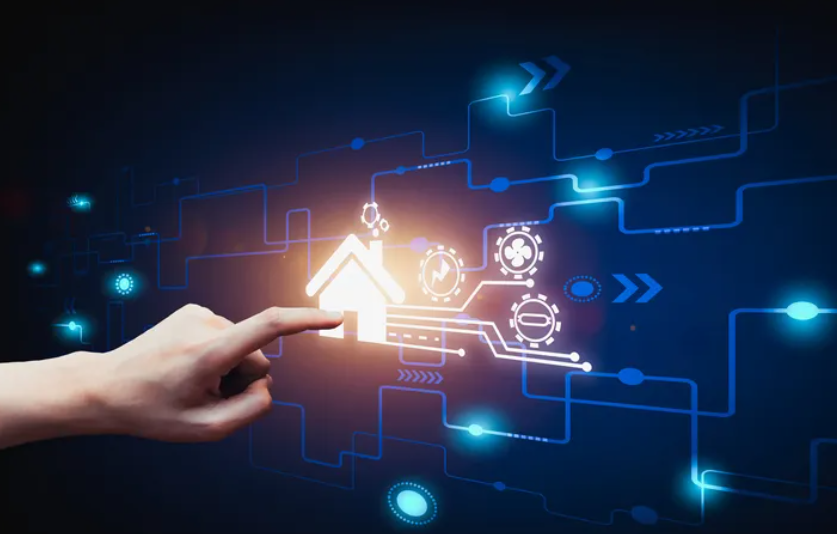The rapid evolution of technology has reshaped nearly every facet of our lives. From communication to transportation, we’ve witnessed significant advancements, but one of the most impactful transformations in recent years has been the emergence of smart homes. These intelligent living spaces, integrated with state-of-the-art devices and automation, are revolutionizing the way we interact with our homes.
In this article, we will explore how technology is transforming our living spaces, the benefits of smart homes, and the potential challenges that lie ahead.
What Are Smart Homes?
At its core, a smart home refers to a residence equipped with devices and systems that are connected to the internet, allowing for remote control, automation, and communication. These devices typically operate through a central platform, such as a smartphone app or voice-activated assistant like Amazon’s Alexa, Google Assistant, or Apple’s Siri.
Smart homes can range from simple setups, like smart light bulbs and thermostats, to more complex systems involving full-home automation. Essentially, smart homes aim to provide more convenience, security, energy efficiency, and comfort.
See also: The Future of AI: How Artificial Intelligence is Shaping Our World
The Key Technologies Driving the Smart Home Revolution
Several technologies have enabled the rapid growth of smart homes. Let’s take a closer look at these innovations:
1. The Internet of Things (IoT)
The IoT is the backbone of smart home technology. It connects everyday devices, allowing them to communicate with each other and be controlled remotely. Devices like smart refrigerators, thermostats, security cameras, and lighting systems are all part of the IoT ecosystem.
2. Artificial Intelligence (AI) and Machine Learning
AI and machine learning are becoming more integrated into smart home devices. These technologies allow devices to learn from user behavior and make intelligent decisions. For example, a smart thermostat may adjust the temperature based on the time of day, your activity patterns, or even the weather forecast.
3. Voice Assistants
Voice-controlled devices like Amazon Echo, Google Nest, and Apple HomePod have brought a new level of convenience to smart homes. Users can control everything from lighting to entertainment systems using simple voice commands, making smart homes more accessible and user-friendly.
4. Smart Sensors
Smart sensors detect changes in the environment, such as motion, temperature, humidity, and air quality. These sensors can trigger actions, such as adjusting the thermostat, turning on lights when someone enters a room, or even locking doors when everyone leaves the house.
The Benefits of Smart Homes
Smart homes are not just about convenience; they offer numerous advantages in various aspects of daily life. Let’s break down some of the key benefits:
1. Increased Convenience and Comfort
One of the biggest draws of smart homes is the convenience they offer. With automation systems, you can schedule lights, adjust thermostats, and even control entertainment systems with a simple voice command or app. Additionally, smart speakers can help play music, set reminders, and control other devices hands-free.
2. Enhanced Security
Smart homes come equipped with advanced security systems. With smart cameras, doorbell cameras, motion sensors, and alarms, homeowners can monitor their property in real-time from anywhere in the world. Some systems even send alerts if unusual activity is detected, ensuring safety even when you’re away.
3. Improved Energy Efficiency
Smart homes are an excellent way to reduce energy consumption. For instance, smart thermostats can learn your temperature preferences and adjust heating or cooling based on occupancy. Smart lighting systems can automatically turn off when no one is in a room. These systems not only help save energy but can also lead to reduced utility bills.
4. Better Health and Wellness
With air quality sensors, smart homes can alert homeowners if the air becomes unhealthy, prompting them to take action. Smart beds, wearable devices, and even lights can help improve sleep patterns. These devices collect data that can help optimize health and wellness.
5. Customization and Personalization
Smart homes can be fully customized to suit individual needs. Whether it’s adjusting your lighting for different moods, setting your coffee machine to brew at a specific time, or creating a personalized environment with music and temperature, smart homes offer unparalleled personalization.
Challenges and Concerns of Smart Homes
While the rise of smart homes offers many advantages, there are also several challenges and concerns that need to be addressed:
1. Privacy and Security Issues
One of the most significant concerns with smart homes is the potential for data breaches and privacy invasions. Since these devices are connected to the internet, they can be vulnerable to hacking. Protecting personal data and ensuring secure communication between devices is essential to maintaining trust.
2. High Initial Costs
Although smart homes can lead to long-term savings, the upfront cost of purchasing and installing smart devices can be high. For those looking to create a fully automated home, the cost can be a barrier, especially for lower-income households.
3. Compatibility Issues
Different manufacturers often use different platforms, which can lead to compatibility issues between devices. A smart speaker may not work seamlessly with a particular light bulb or thermostat, creating frustration for homeowners trying to build a cohesive smart home system.
4. Dependency on Technology
As with all technology, there is a risk of becoming overly dependent on smart devices. If your internet connection fails, or if a key device malfunctions, it can disrupt daily activities and routines. Therefore, it’s important to have backup plans in place.
5. Complexity in Setup and Maintenance
Setting up a smart home can sometimes be complex, particularly for users who are not tech-savvy. While some devices are easy to install and use, others may require professional installation or frequent software updates. Proper maintenance is also necessary to ensure the devices continue to function effectively.
The Future of Smart Homes
As we move into the future, smart homes are expected to become even more integrated into our daily lives. Here are a few predictions for the future of smart homes:
1. Greater Integration with AI
The future of smart homes will see deeper integration with AI, allowing devices to anticipate user needs and respond accordingly. For example, a smart home could recognize when you’re getting home from work and automatically adjust the thermostat, lighting, and entertainment system to your preferences.
2. More Affordable Devices
As smart home technology becomes more widespread, we can expect to see lower prices for smart devices. Manufacturers are likely to offer more budget-friendly options without sacrificing performance or functionality, making smart homes accessible to a larger population.
3. Improved Energy Efficiency
With growing concerns about climate change and the environment, smart homes will continue to play a vital role in improving energy efficiency. Expect even smarter energy management systems that automatically adjust settings to minimize energy waste, helping to reduce our carbon footprints.
4. Increased Voice Control
Voice assistants will become more intuitive, with the ability to recognize different voices and respond with greater accuracy. This will allow multiple family members to control devices without any confusion or interference.
5. Enhanced Healthcare Integration
Smart homes will become an essential part of healthcare, offering advanced health monitoring and care solutions. From fall detection sensors to remote medical monitoring, the future smart home will ensure that health and safety are continuously monitored, making it easier for the elderly and individuals with disabilities to live independently.
Frequently Asked Questions (FAQs)
1. What is the main benefit of a smart home?
The main benefit of a smart home is convenience. It provides homeowners with greater control over their living space through automation and remote access, improving comfort, security, and energy efficiency.
2. Are smart homes secure?
While smart homes offer many security features, they can be vulnerable to hacking if not properly protected. It’s important to use strong passwords, update devices regularly, and ensure that all devices are from reputable manufacturers.
3. Can I retrofit my existing home to be a smart home?
Yes, many smart home devices can be added to an existing home. You can install smart lighting, thermostats, cameras, and other devices without needing to build a completely new smart home.
4. Do smart homes save energy?
Yes, smart homes can significantly reduce energy consumption. Smart thermostats, lights, and appliances adjust based on usage patterns, helping you save on utility bills and reduce your environmental impact.
5. Are smart homes expensive to maintain?
The cost of maintaining a smart home can vary. While devices may need software updates, occasional troubleshooting, or battery replacement, the long-term savings on energy bills can offset some of the initial setup costs.
6. Can smart homes help with elderly care?
Yes, smart homes can enhance elderly care by offering features such as fall detection, remote health monitoring, and automated lighting to ensure safety and comfort.
Conclusion
The rise of smart homes has undeniably transformed the way we live. As technology continues to evolve, our homes will become even more intelligent, intuitive, and responsive to our needs. From increasing convenience and security to offering more sustainable and personalized living spaces, the future of smart homes is bright. While there are challenges to address, the benefits far outweigh them, making smart homes an exciting part of our technological future.



